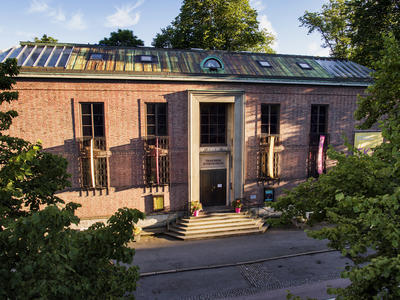To Make it Soft is an exhibition that plays with ways of displaying art in what is known commonly as the Sculpture Hall at Trondheim kunstmuseum. The hall got its name simply because it was where the sculptures in the collection were displayed. Sculptures were often placed on high pedestals, in a row, preferably close to the walls. Much has changed since then. In anticipation of the new presentation of the museum's collection, opening in autumn of 2023, we have once again created an exhibition of sculptures in this hall. This time around, they are not placed upon pedestals. Instead, they are laid down on soft bases.
The pedestal is an important element that, although often overlooked, guides our relationship with the artwork. In practical terms, it often acts as a safeguard against physical contact from the public. On a more metaphorical level, it separates the sculptures’ world from ours. The sculptures are literally motionless; in their world time stands still.
The pedestal is also an element that dignifies the sculpture by elevating it. The larger the pedestal, the more important the sculpture and what it represents seems to us. In this exhibition various portrait busts can be found, ones of important and renowned persons and those also of anonymous figures and private individuals. In the exhibition To Make it Soft there is no discrimination. Emperor Augustus by Chrisopher Borch is presented in the same way as little Knut by Tone Thiis Schjetne.
Taking the sculptures down from classic pedestals makes them seem more vulnerable. As if we are finding them when they are about to fall asleep or having just woken up—a moment both private and intimate. Some of the sculptures are kept thus in storage, waiting to be brought out and exhibited to the public.
How a museum chooses to present and treat its own collection is never neutral. To Make it Soft can be seen as part of an ongoing exploration of exhibiting the collection with the objective of bringing about new and meaningful encounters between the objects and the audience. Think of this exhibition as a kind of palate cleanser if you will. An attempt to liberate the work from chronology and hierarchy. By placing the sculptures on a soft base, we can concern ourselves less with what it is supposed to represent and instead focus more on the art objects “thingness” —its material, its weight, in addition to the craftsmanship involved in its creation.
This is an invitation to those who know nothing about art, and to those who know too much, to experience the sculptures not just as images, but as objects with a weight and a surface which have been given shape by the artist. And in the process, possibly creating room for new stories and narratives to emerge.
- 1/1











